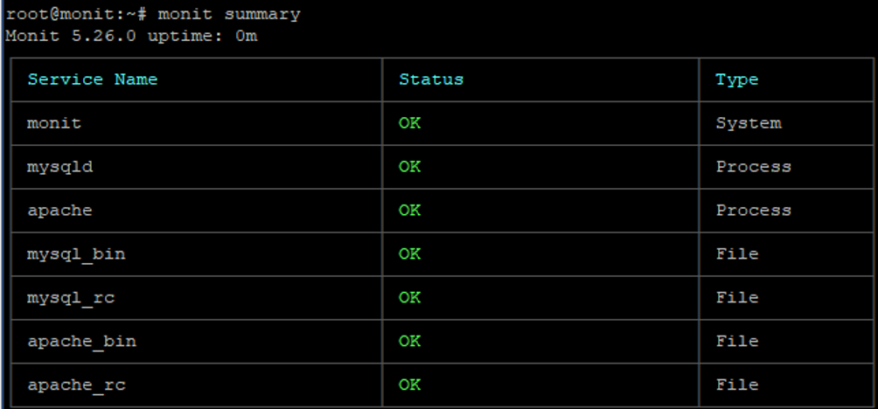
Processes that Monit will be monitoring, should already be configured. Monit supports different Linux distros, but this guide will use CentOS 7.
#Linux monit examples free#
If you are a new user, you can get a free account in your Alibaba Cloud account. You must have Alibaba Cloud Elastic Compute Service (ECS) activated and verified your valid payment method. In this tutorial, we will be installing and configuring Monit on an Alibaba Cloud Elastic Compute Service (ECS) instance with CentOS 7.

#Linux monit examples password#
Navigate to or or and enter user name admin and password monit. Make sure you should have installed apache to access the Monit web interface. Use address localhost # only accept connection from localhostĪllow localhost # allow localhost to connect to the server andĪllow admin:monit # require user 'admin' with password 'monit'Īfter making above changes, you need to start monit service to take effect on changes.

/etc/nf : Monit Configuration file on Fedora/CentOS/RHEL.Logs are stored at /var/log/monit on RPM & /var/log/monit.log on DEB systems. By default Monit monitor all services every 2 minutes which was defined in Monit configuration file. In order to use Monit, we need to uncomment the below lines from Monit configuration file.
#Linux monit examples install#
We can directly install Monit on Debian based systems (Debian, Ubuntu & Mint) but we have to enable EPEL Repository to install Monit on RPM based system (RHEL & CentOS). From the web-interface you can start, stop and restart processes and disable or enable monitoring of services. Monit has built-in a lightweight HTTP(S) interface you can use to browse the Monit server and check the status of all monitored services. Monit will easily integrate with init, upstart or systemd and can use existing run-level scripts to manage services. TCP, UDP and Unix Domain Sockets are supported. Monitor network connections to various servers, either on localhost or on remote hosts. Monit monitor Files, Dirs and File systems changes, such as time stamps changes, checksum changes or size changes. Also it will automatically stop or restart particular service when it using too much resources on server and send you an alert message. if Apache is not running, Monit can start Apache again automatically.

Monit can act if an error situation should occur, e.g. All the Linux distributions included Monit on their official repository, so we can easily install using the distribution official packages.Ĭheck other Monitoring Tools for Linux Monit conducts automatic maintenance and repair and can execute meaningful causal actions in error situations. Also monitor general system resources on localhost, like CPU usage, Memory and Load Average. Monit is a small Open Source utility for managing and monitoring Unix system services such as (Apache, MariaDB, FTP, SSH, Sendmail, DNS, etc.,), programs, files, File systems and directories.


 0 kommentar(er)
0 kommentar(er)
